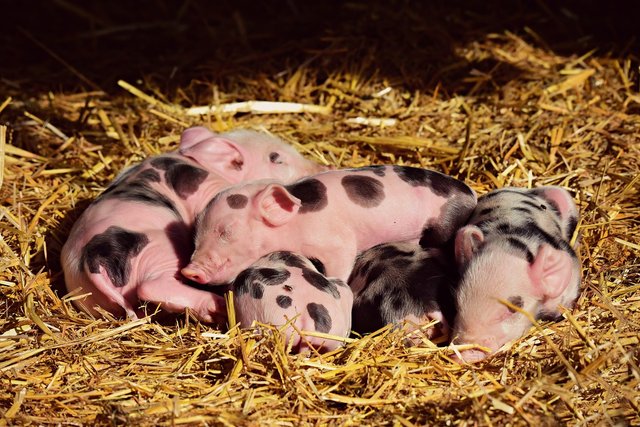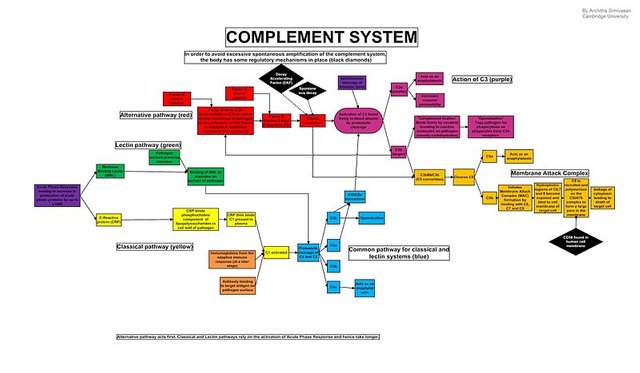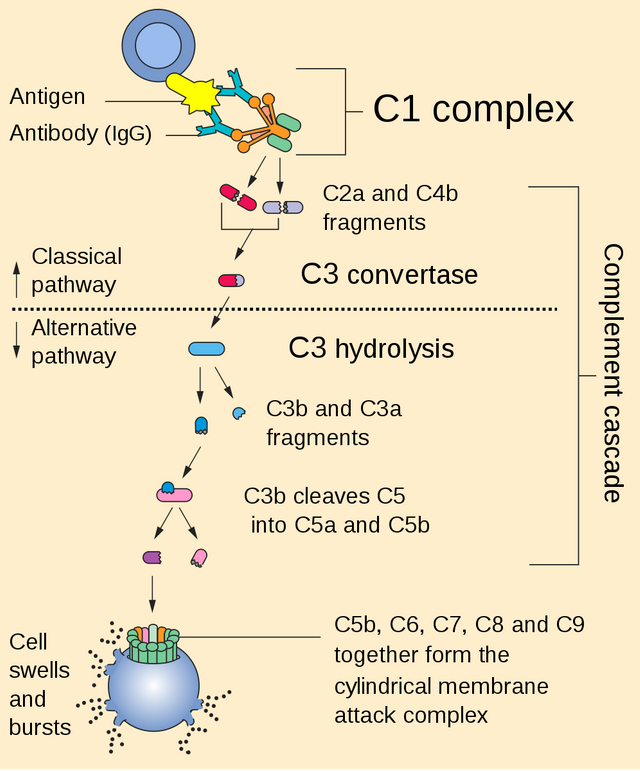A look at,xenotransplantation: can pigs save human lives?
Unless there are increase in the organ transplant, it will continue to be one of the major aspect that has an increase in mortality rate.
Today we will be talking on xenotransplantation which by definition is the transferring of cells,tissues or organ from a particular species of animal to another. It is a way of using other animal organ such as pig to replace human organ.
The use of this animal organ arises when people who have organ failure could not be able to see who will donate organ for them. Due to this challenges, many scientists have come together to find out another alternative means of reducing or bringing down mortality rate as a result of organ transplant.
 pigs,source:pixabay
pigs,source:pixabayIt is really a difficult means to replace animal organ with human regarding the fact that there are some setting things which could hinder this factor.due to this, using other animal organ in replacement of human is a critical part in modern science that needed more attention.
Like some will always say that xenograft bring the risk of pathogenic retrovirus into the human population.
Anyway balancing the advantages of pig donor are seriously difficult. This is because when a pig kidney is implanted into a human body It is found that this kidney will likely cause hyper acute rejection. This rejection is due to galactosyl 1,3 alpha galactose a disaccharide antigen found in the pig cells which is not present in the human cells.
Rejection of this organ may also be due to absence of human complement regulators on the pig cells which include human decay accelerating factor and human membrane cofactor protein. Before we go into the full details of this topic,let us quickly glance through the history of xenotransformation.
Brief history
Xenotransformation started from the onset in the year 1902 where reconnected blood vessels for organ transplant were made by Alexis carrel. In 1902-1923 the first attempt of organ xenotransplants were made,but all the attempt failed due to inability of the patient to survive. Later In the year 1944 there were rejection of organ transplant due to immune system. This was first observed by peter Medawar from the university of London after attempting organ transplant.
In the year 1954 the first successful donation of kidney from human to human were made between two identical twin's which after that Gabon monkey kidney were transplanted to 6 patient who survived within 19-98 days.
Later in the year 1964 chimpanzee heart was first transferred to human by James Hardy at the university of Mississippi.
In the year 1997 pig liver were used to sustain a 20 year old patient who was having a liver failure. This is done by passing his blood through pig livers which after that,xenotransplants was ban in the whole country between the year 2000-2011.
Some of the ban country was later lifted for further attempt. In the year 2017 the first clinical trials of pig cell transplant were made to cure Parkinson's disease which lasted till date.
Coming back to our normal discussion,in this article we will be concentrating on the effect of organ transplantation and the recent development on how this transplant could be successful. Let us begin by knowing how the antibody could acts as a barrier in organ transplant.
Looking at what complement system has to do with organ rejection
Complement system can be called a part of an immune system which helps the body by combining with antibody and phagocytic cells to clear bacteria or microbes from the system. It does this by lysing of cells,opsonization and by binding to specific complement receptors on it's cell through triggering the cell functions, inflammation and secretion of immune regulatory molecules.
 wiki commons by,Architha Srinivasan under~CC BY-SA 3.0
wiki commons by,Architha Srinivasan under~CC BY-SA 3.0 complement system are activated when clq combine with antigen antibody in the presence of calcium to stimulate clr. The stimulated CLR split CLS to form Ag-ig-clqrs. when cl is activated it therefore acquires esterase activity that cleaves C4 into C4a and C4b where C4a is released to the cells. CLS also cleaves C2 into C2a and C2b. The formed 4b combines with 2a to form a reversible complex C4b2a which can also be known as C3 convertase. C4b2a(C3 convertase) formed activates C3 molecule into C3a and C3b.
The formation of C3a and C3b leads to the activation of C5 convertase which also splits C5 into C5a. C5b binds C6 and C7 which initiate the formation of the membrane attack complex.
C5b,6,7 combines with C8 receptor which allows the insertion of C8 into target cell membrane.
At this point C5b,6,7,8 complex is formed but remember there is always a small membrane channels located in the target cell which helps in the influx of C9 into tubular structure. The formed C9 penetrate into the cell membrane where it changes the outer surface of it by creating holes into the target cell membrane therefore causing lysis of the cell or organ.
Since lysis of the organ can always result In such situation some profer a solution on how "decay accelerating factor " could help to prevent or minimize the rate of lysis associated with this organ transplant. Looking at decay accelerating factor, this is a protein encoded with CD55 gene that regulates the complement system by recognizing C4b and C3b. The presence of decay accelerating factor prevents the conversion of C2 to C2b therefore preventing the formation of C4b2b C3 convertase.
The help of decay accelerating factor prevents or blocks the formation of the membrane attack complex which is the most important thing that contributes to the rejection of the organ.
At this point, as we are looking at the positive effect of decay accelerating factor,yet it is still not an only option that could serve a lot of function In preventing organ rejection.
Another way which organ transplant could help or serves a lot of function is by the use of mitotic inhibitors to thwart T cell proliferation. This is a drug given before and after transplantation to diminish the proliferation of T cell. This mitotic inhibitors(azathioprine) is used to block the synthesis of inosinic acid by acting on s phase cell.
Another drug that could serve the same function as azathioprine is cyclophosphamide. It is a drug that penetrate the helix of DNA that leads to alteration of DNA chain. This drug prevents proliferation of T cell by preventing rapid dividing of cells. Another possible way organ transplantation may be possible is through the blocking of co-stimulatory signal. It is found that when the co-stimulatory signal is produced through interaction of B7 molecule on the membrane of antigen presenting cell with CD28 or CTLA-4. CD28 can be found both in its resting and activated form which binds B7 with a high affinity.
Blockage of this co-stimulating signal can be done by using CTLA-41g fusion protein. This protein helps to block the rejection by the human tissue transplant. The use of monoclonal antibody is another way where T cells can be suppressed. It have proven that the use of monoclonal antibody can suppress activated T cell. This is done by binding of antibody that is coated with T cells to fc receptor on phagocytic cells. On binding of this antibody, T cells are cleared from the circulation. Monoclonal antibody can also be use when bone marrow transplantation is needed to deplete the immunocompetent T cells that are present.
Although all these are contributed in the suppression of immune reaction over a foreign body, the scientists are still making research on how this reaction against foreign body can be totally suppressed. At this point even though suppression of the immune system is not the major factor involves in the rejection of this organ. It is also found that transferring of an organ from a giving animal to human is at great risk of getting retrovirus from the animal.
This have been a major problem in organ transplant.
Recently,scientists have made a break through by removing this threatening virus from the animal DNA. On this note that Andrew Griffin said,
The use of pig organs In human has been held back in large part by fear about retrovirus that are found in pigs and could prove fatal to humans, if they made their way into the body and could then cause an epidemic as they spread from human to human. Porcine endogenous retrovirus known as pervs are a permanent part of the gene and so appeared be impossible to remove. But the researchers have now successfully removed those pervs from the pig genome using the CRISPR-Cas9 gene editing techniques that allowed them to produce perv-free,living pigs. That,in turn removes one of the biggest barriers to organ transplantation from pig to man.source
Even though this discovery has made a great changes in the field of medicine, scientists are also looking hard to see that perv- free pigs are engineered in other to become safer to use in humans.
Conclusion
Haven't understood the predicament in xenotransformation,scientists and many modern researchers are strongly applying effort to see that animal organs can be used in human.
The use of CRISPR-cas9 editing techniques is a prove to show that in no distance time the increment in death rate will drop down.
Though there are some few things which is acting as a set back to this development.
At this point, I will like to thank those who made it as their point of duty to see that the world is going up to it's apex level by finding or proffering solution to the rate of mortality that is in the world, by bringing out the best in them to eliminate organ rejection in the universe.
Refrences
=Xenotransplantation
=Galactosyl 1,3 alpha galactose
=Decay accelerating factor
=History
=Complement system
=Kubby Immunology textbook by Barbara A. Osborne and Janis Kuby,7 edition,page 490-493

This post has been voted on by the SteemSTEM curation team and voting trail in collaboration with @curie.
If you appreciate the work we are doing then consider voting both projects for witness by selecting stem.witness and curie!
For additional information please join us on the SteemSTEM discord and to get to know the rest of the community!